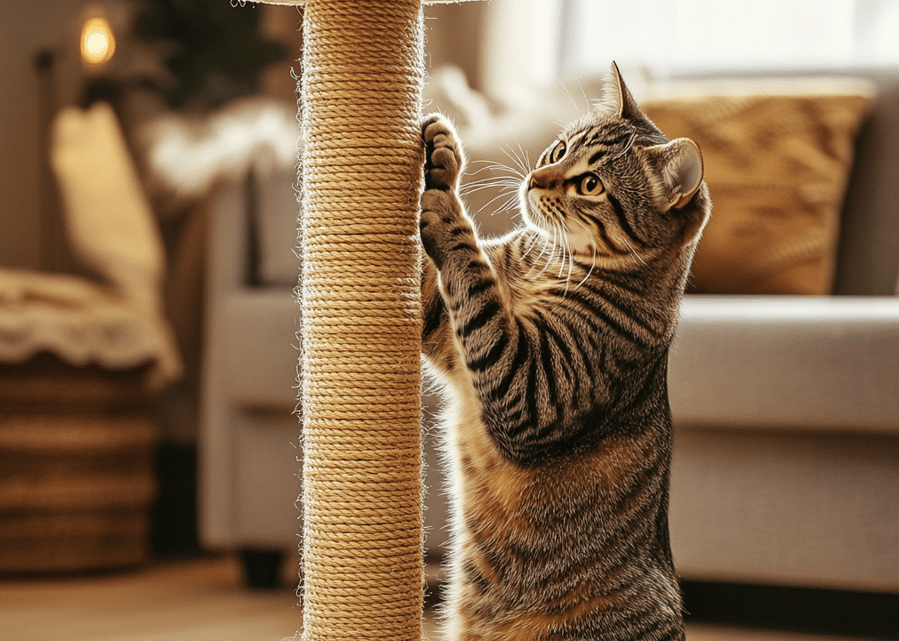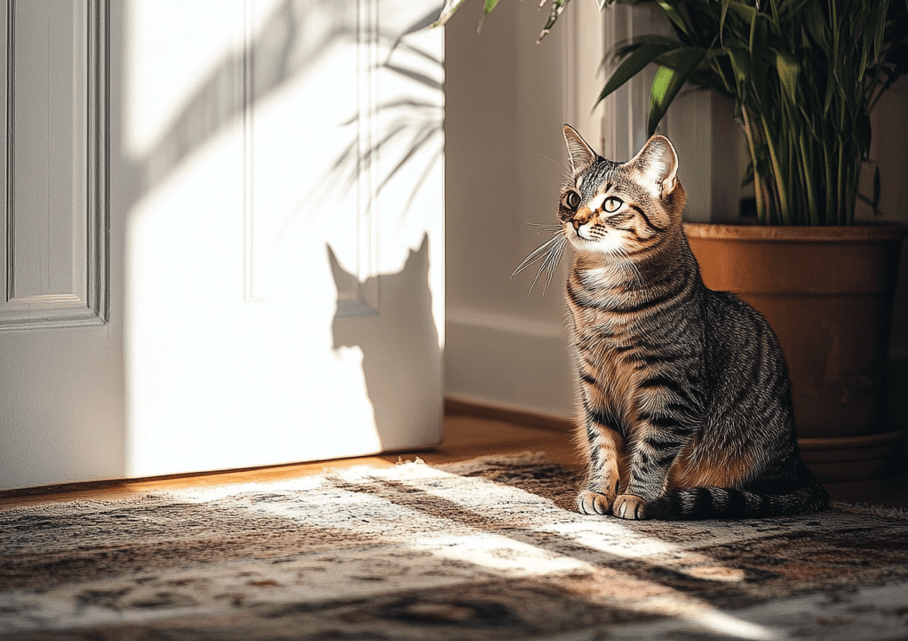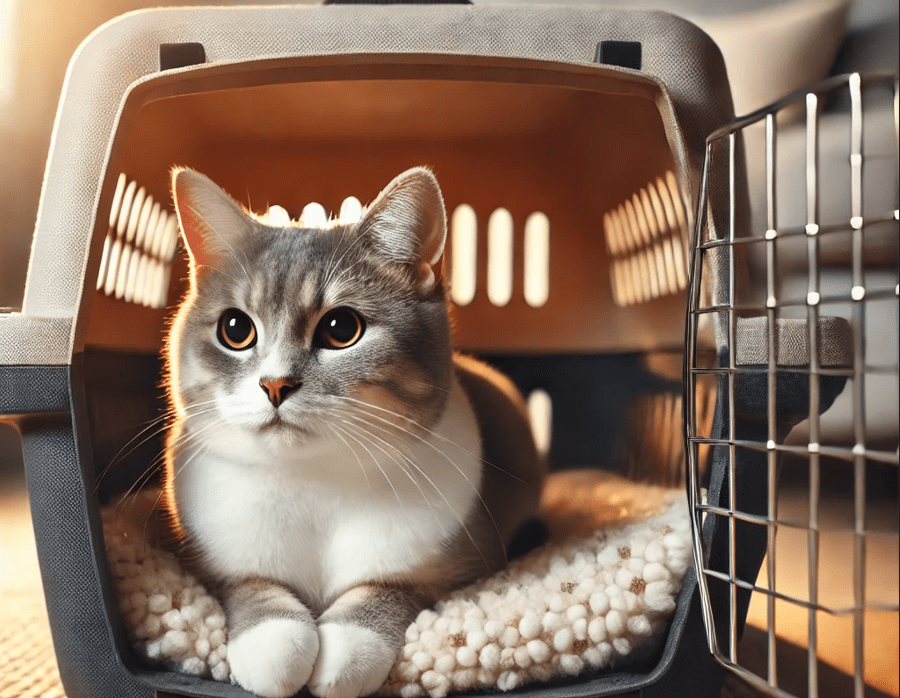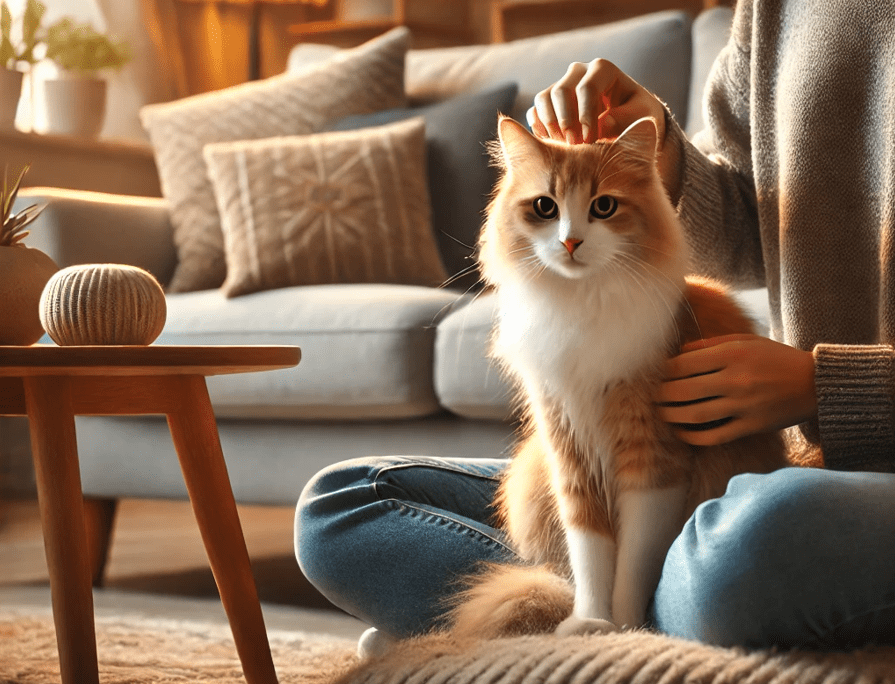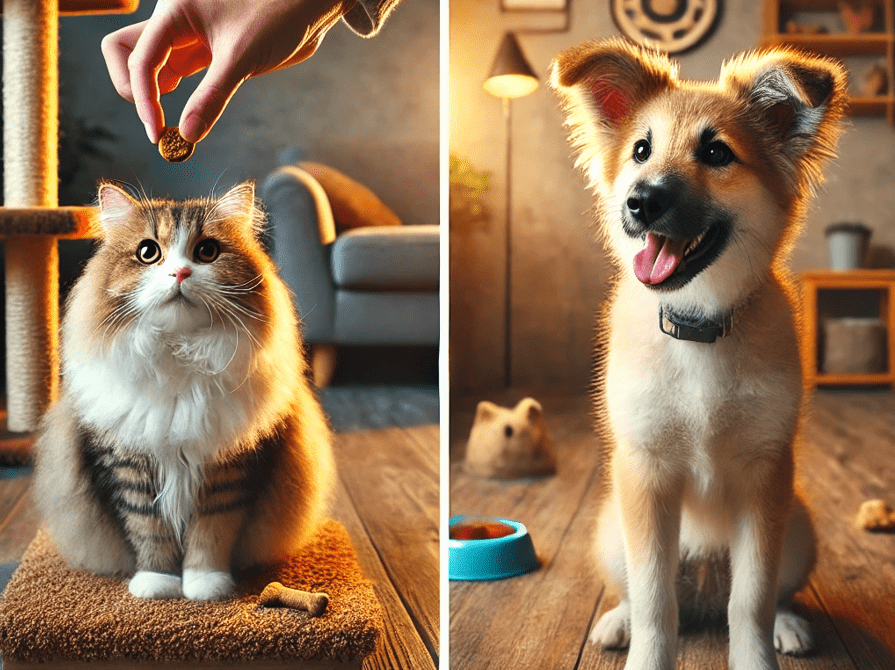
Have you ever thought of training your cat? Dog training is a common type of training, but cat training is something that will sound weird for most. But it is possible to train a cat, and it can actually be quite a rewarding experience. With patience, positive reinforcement and consistency, you can train your feline friend to perform a whole range of impressive tricks. And let’s talk it about cat training vs. dog training and bust this myth that cats cannot be trained!
The Differences between Training Cats and Dogs
Before being able to train cats and dogs correctly, dog owners first need to realize there are some major things that are different between the two. These differences affect how each species learns and develops training responses.

Common features of cats in training
Independence: Compared to dogs, cats are more naturally independent and self-reliant. Dogs, which are pack animals that function well in social hierarchies, are different from cats, which are solitary by nature. This independence can make him look less than obedient or eager to please.
Motivation: The cats have different incentives than the dogs. Although they do respond to good behavior with positive reinforcement, like a treat or playtime, they are not as motivated by the desire to please their owners. Instead, they are guided by self-interest and immediate rewards.
Training Approach: A cat can only be trained with patience and flexibility. Cats usually have much shorter attention spans than dogs and may get bored quickly. Training sessions should be kept short, positive, and ensuring that the desired behaviors that is encouraged and rewarded, to engage them.
Communication: Cats have a distinct method of communication, and recognizing their body language is important in training. Watch their tail movements, ear positions and vocalizations to learn about their mood or if it is even a good time to train.
Territorial Nature: Cats are territorial animals and their environment plays a huge role in their behavior. They will be most secure and eager to learn in a home that is comfortable, reassuringly familiar and a place of love.
Understanding that every cat is a unique individual is a key factor in effective feline training; every cat will hear things differently than others. Yes, over time and with the correct motivation you can teach your cat to do new behaviors and tricks, showing that cats can also be trained like dogs, just in a different way!
Common features of dogs in training
Pack Instincts: Dogs are instinctively pack-oriented creatures , so they instinctively want to follow a leader. This genetic factor enables them to be more spiritually compliant and pliable to the old school dog training methods.
Eagerness to Please: Dogs are extremely driven by their need for approval from their owners. This makes them eager learners, and they are easier to train than some other pets.
Flexibility in Training: Dogs thrive on intensive training and can be taught using various approaches, from positive reinforcement to the command-based method.
Expressive Communication: Dogs body language extremely expressive, humans tend to read them easily than the cats. This helps to develop a closer relationship and understanding during training.
Exercise Requirements: Dogs tend to have a higher energy level according to their breed and need to be exercised regularly. It can not only be incorporated easily into their training schedules, but also provide an enjoyable and healthy whether active.
Unlike dogs, cats lack a pack mentality or a desire to please its owner. Training cats demand handling them with great respect than a dog because cats are inherently independent and need to value a partnership and that is why Training Cats is a completely different process. Cats respond very strongly to instant gratification; therefore immediate rewards such as treats or playtime work extremely well.
Essential Tips and Tricks for Training Cats
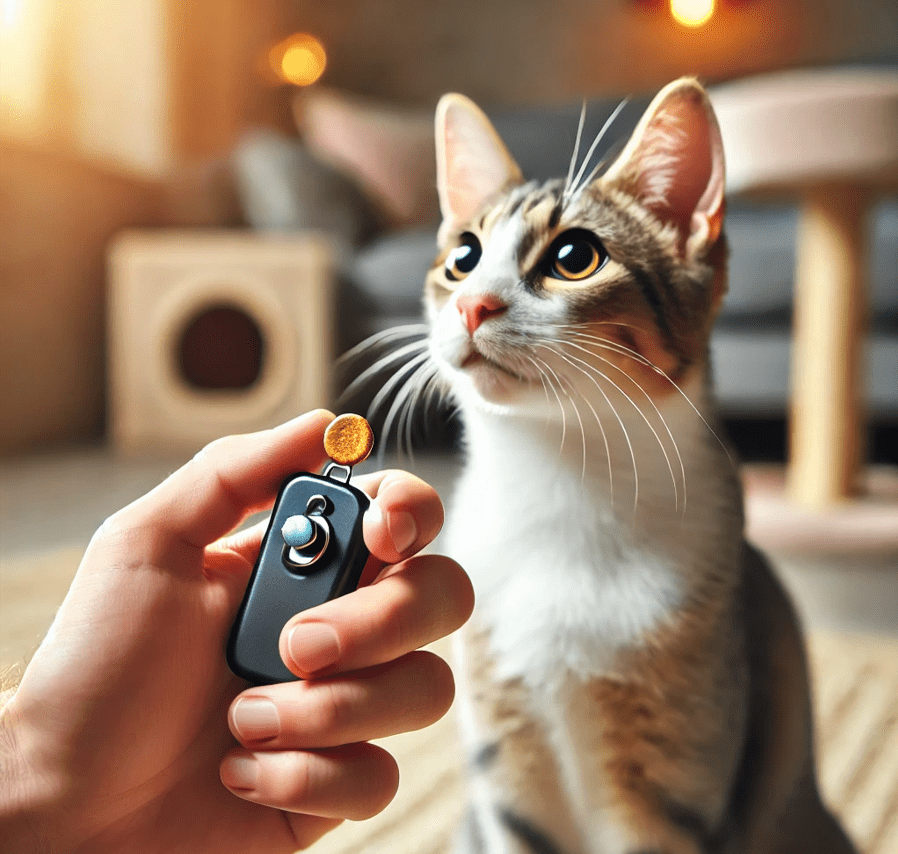
1.Patience is Key:
Training a cat takes a lot of patience. Cats do things on their own terms and their own timelines, so even an elementary command like “sit” can take weeks. Start with basic commands and be consistent. This is just like when every time your cat sits, you naturally say sit and give them a treat. As time goes on, this positive reinforcement allows them to make the connection between the command and the action.
2.Understanding Rewards:
Treats are key to cat training. Cats are not the most compliant creatures, so if you want them to follow directions, you must provide a good reason, so treats make great motivation. Go for tiny, nutritious treats, like chunks of chicken or fish, but watch out for portions to prevent obesity. Another method is using a clicker as a non-food reward to encourage positive actions.
3.Consistency is Key:
Regular, consistent training sessions are the key to success. Spend approximately a half-hour each day working on a particular trick/behavior and don’t continue to a new task until the old one has been mastered. For instance, if you’re training your cat to enter a travel cage, put a treat inside every day and give the same command each time. Eventually, your cat will connect the cage with good experiences.
Advanced Training Tips
Once your cat learns some basic commands, you can gradually work up to more complicated tasks. The same factors of patience, rewards and consistency still apply. Prevent it from fading in your dog’s mind by treating it from time to time.
Dogs and cats planned differently and with the right training methods, you can strengthen the bond with your pets.
Types of Cat Training
Cats are not commonly thought of as trainable. Many people believe cats to be independent and able to do things on their own without training. And to some extent that may be true—but cats are trainable too; they’re just trained differently than dogs. Here are some examples of the most common forms of cat training:
1.Litter Box Training:
Kittens are trained on this form at the very beginning. This involves training them to use a litter box for their elimination needs. Cats instinctively want to bury their waste, so the training is fairly easy. Generally, the process involves showing the kitten the litter box and encouraging it to go by putting them in the box after eating and sleeping.
2.Behavioral Training:
In this kind of training, the focus is on correcting and avoiding this type of undesirable behavior such as scratching the furniture, biting, aggression, etc. Common techniques include positive reinforcement, which rewards positive behavior with treats or praise, and deterrents, like attaching double-sided tape to furniture to deter scratching. Be consistent in reinforcing desirable behaviors.
3.Clicker Training:
One common method is clicker training which uses a distinct sound (the click) to communicate to a cat that it has done the thing you wanted it to do. The treat comes immediately after the click, teaching the cat that this sound means good stuff is coming. This technique can gradually be used to teach tricks and commands, and ultimately to modify behavior.
4.Leash Training:
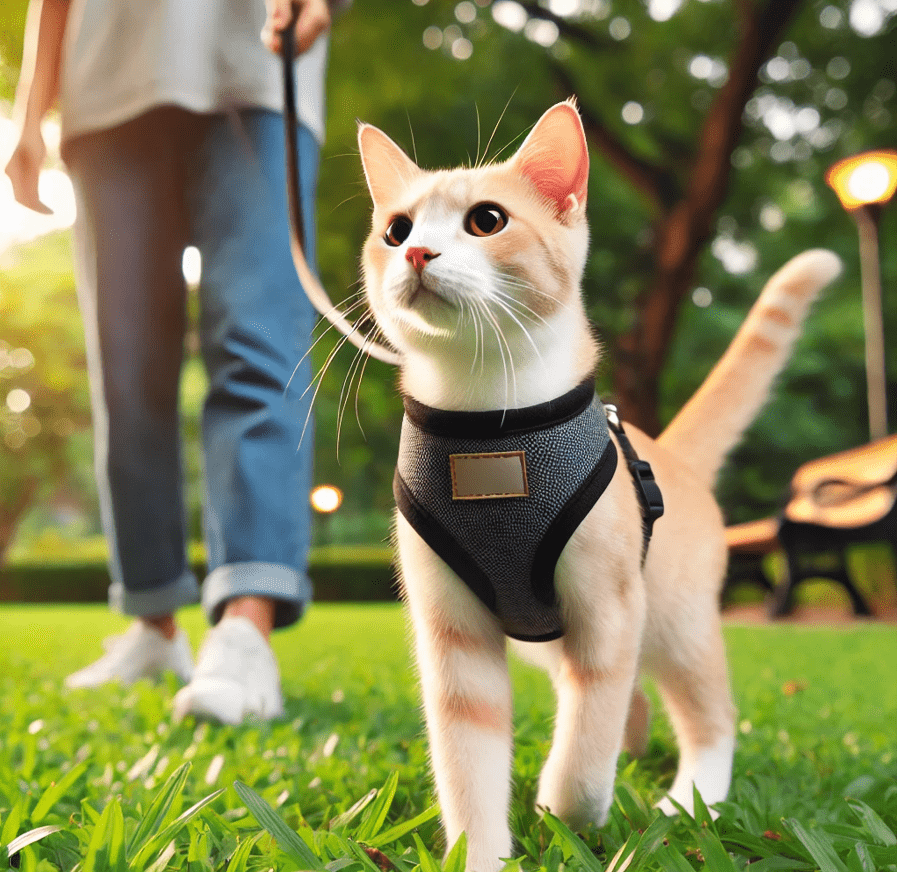
Some feline companions are taught how to walk on a leash so they can safely enjoy the outside world. This does take time; cats need to become comfortable wearing a harness and feeling the leash. For successful outdoor experiences, ensure gradual transition slowly from quiet and safe environment.
5.Trick Training:
With consistent practice and positive reinforcement, cats can learn a wide range of tricks, including sitting, giving a high-five, or rolling over. Trick training also helps the cat mentally and strengthens their bond with the owner.
6.Socialization Training:
Socializing cats is the process of exposing them to various people, animals, environments, and experiences in order to increase their confidence level and desensitize them against various situations they may encounter throughout their lives. This kind of training is especially important during the critical socialization period of a kitten’s life, which is between 2 and 7 weeks of age. Good socialization helps avoid behavioral problems later in life.
7.Agility Training:
Agility training consists of leading cats through obstacle courses that can include tunnels, jumps and weave poles. This is an excellent training to provide physical and mental stimulation. If you have a cat that enjoys agility training (not all cats will) it can be a very rewarding activity.
Cats should be trained in a patient, consistent manner. Some cats may not be as responsive to commands or training as dogs, and they are not always interested in pleasing their owners as much. The best approach is positive reinforcement — treats, praise, or play — because it encourages cooperation without inducing stress. Recognizing and catering a cat’s instinct to the training process proves that cat owners can both train their furry friends and build a closer intimacy with their animal.
What Supplements Can Support Cat Training?
Although cat training is about modifying your pet’s behavior with different techniques, dietary supplements are not often brought up, and rarely when people talk about cat training. Some supplements can be used to a supportive effect by helping to improve a cat’s overall health, mental clarity and emotional stability, all of which can help with the training process. Here are a few supplements that may be helpful:
1.Fish Oil (Source of Omega-3 Fatty Acids)
Omega-3 fatty acids in fish oil are known for their benefits in brain health and cognitive support. This may enhance a cat’s capacity to acquire and remember new behaviors. Moreover, fish oil helps maintain healthy skin and a shiny coat, which can contribute to a cat’s overall comfort and health, indirectly affecting their responsiveness during training.
2.Probiotics
A healthy gut microbiome is the key to a cat’s overall well-being, including their emotional health. Probiotics boost a healthy digestive system and gut flora in the gastrointestinal tract for better mood and focus.
3.B Vitamins
It is important for a functioning nervous system and energy levels. Cats of any age can benefit from a B-complex supplement, but it can be especially helpful for older cats or those experiencing fatigue; B vitamins increase alertness and receptiveness, which can help during training.
4.CBD oil
It has been reported that CBD oil is useful for anxiety as well as relaxation. You will have a cat with good focus and attention that is much easier to train. That said, CBD products designed for pets should be used, and your cat’s vet should be consulted before CBD is included in your cat’s routine.
5.L-Theanine and Calming Supplements

This amino acid is found in many calming treats or chews and may alleviate stress and overexcitability in your cat. By promoting a relaxed state, these supplements can help cats be more attentive and responsive during training exercises.
Important Considerations: Always consult with a veterinarian before adding any supplement to your cat’s diet. And not all supplements will be suitable for all individual cats, as cats have unique nutritional requirements and sensitivities. A professional can help you choose the proper products and doses to keep your cat safe and happy.
Final Thoughts
Training a cat is a rewarding activity that will deepen your relationship with your kitty. Cats have a different rate of learning than dogs, but they are capable of learning new behaviors, given enough time, consistency, and positive reinforcement. Supplements like fish oil, probiotics, B vitamins, CBD oil, and L-Theanine can support your cat’s physical and mental health, complementing your training efforts. With understanding of your cat’s unique nature and utilizing the right training methods, you can unleash the true potential of your feline friend, and experience the satisfaction of training a cat. Enjoy the journey, and you might be surprised at what your cat is able to do!

